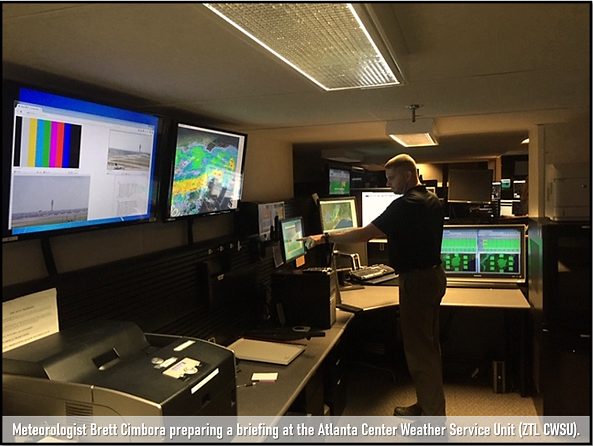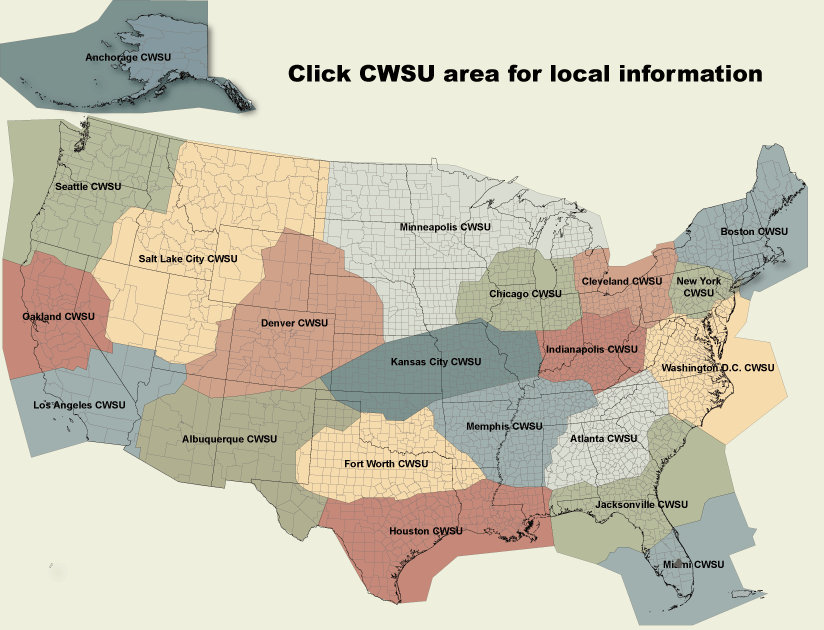
 Overview
Overview
The Center Weather Service Units monitor and provide weather forecasts and advisories to the nation's 21 Air Route Traffic Control Centers (ARTCC). The nation's 21 CWSUs concentrate fully on aviation weather for the Air Route Traffic Control Center (ARTCC), producing specialized tailored forecasts and advisories of thunderstorms, turbulence, icing, and precipitation affecting the National Airspace System.
These face-to-face on-the-spot briefings convey a variety of weather information to air traffic controllers and are vital in helping FAA personnel safely and efficiently route traffic. Three Pre-Duty Weather Briefings are also created by each CWSU every day to provide situational awareness of upcoming aviation issues. In addition to the weather briefings, CWSU meteorologists issue Center Weather Advisories (CWAs) and Meteorological Impact Statements (MISs) on an as needed basis.
The CWA is an aviation weather warning for conditions meeting or approaching national in-flight advisory (AIRMET/SIGMET) criteria. CWA's are issued for aviation hazards that are expected to occur within two hours and have not been previously forecast by the AWC or the AAWU, or to supplement the AWC and AAWU products. CWA's can be issued for:
| Thunderstorms | Turbulence | Icing | Heavy Precipitation | Freezing Precipitation |
| Low IFR | Surface wind gust > 30kts | Low-level wind shear | Volcanic ash | Dust or sandstorms |
MIS’s are unscheduled flight operation planning forecasts for air traffic controllers. A MIS provides additional information on the current or expected weather information and is tailored to meet the unique requirements of the host ARTCC.
The meteorologists at the CWSU are very knowledgeable about the weather regimes within the large forecast domain of an ARTCC. Due to its size, a single ARTCC might contain mountainous regions, deserts, and tropical areas.
History
The catalyst that placed meteorologists in each ARTCC was the 1977 crash of Southern Airways flight number 242, which flew into a thunderstorm and crashed en-route to Atlanta. Both engines flamed out due to hail ingestion.
The ensuing investigation suggested that air traffic controllers needed a better way to receive timely weather information, hence the CWSU program was born.
Below is a map of the Center Weather Service Units and their areas of responsibility.
Click on the image below to go to any office website.
